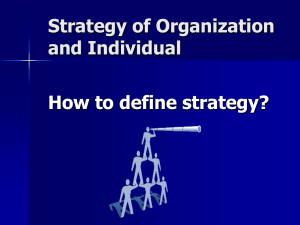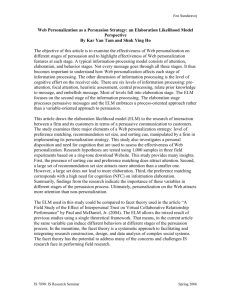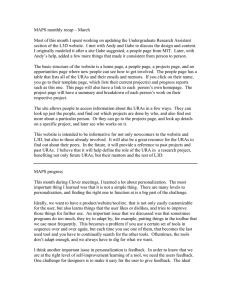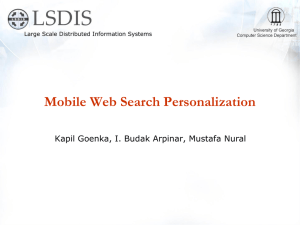Personalization, Voice and Image Principles
advertisement
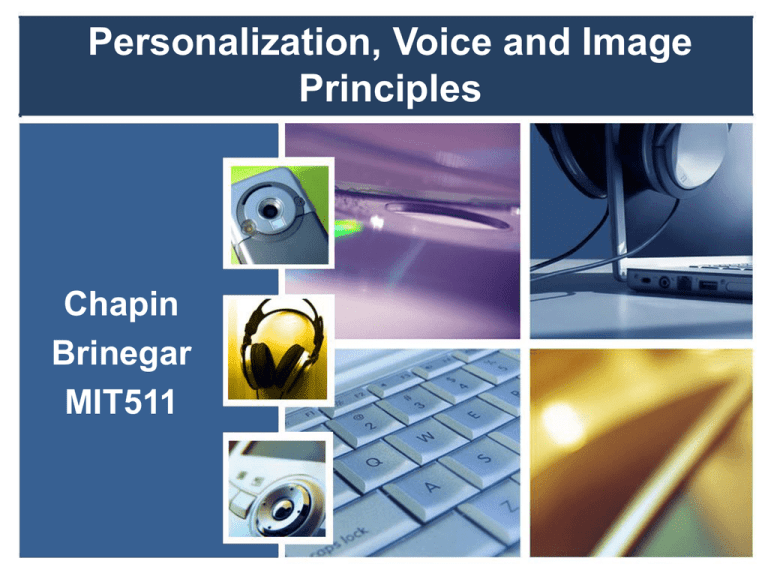
Personalization, Voice and Image Principles Chapin Brinegar MIT511 Introduction • Reading, viewing a presentation or playing an interactive game are social events. • Implied conversation between author and learner(s) • Words, Voice and Animation are important! Introduction At the end of this presentation, you will be able to: • Define personalization, voice, and image principles • Demonstrate application of these three principles Personalization Principle People learn better from multimedia presentations when words are in conversational style rather than formal style. Personalization Principle Here is an example: What is different about the second script? Personalization Principle How Can We Create This? • By using first person instead of third person • Use words like: You, Your, I, Me, We • Create more user friendly tone • Talk to learners instead of talking at them (Pages 245-246 in text have more examples) Personalization Principle Advantages: • Encourages learners to try harder to comprehend • Primes activation of social responses • Strengthens cognitive processes • Increases quality of learning outcome Personalization Principle Disadvantages: • Adds no new information to material • Can be distracting to learner • Divert attention away from essential information Personalization Principle What Does Research Tell Us? • Supported in 11 out of 11 tests • Strong and consistent evidence • People learn on deeper level when presented with text in conversational style (Pages 249-251 tell more about the experiments conducted) Personalization Principle Conditions • Don’t over do it! • Balance with cognitive load • Works best when learner is not familiar with material or “tutor” • Social/Cultural considerations Personalization Principle Words aren’t the only things that can shape a learning experience…. A person’s voice is also important! Voice Principle People learn more deeply when the words in a multimedia message are spoken by a friendly, human voice rather than by a machine voice. Voice Principle In addition, people prefer a standard accent as opposed to a foreign one. Example 1 Human Voice Example 2 Computer Voice Example 3 Computer Voice-Accent Voice Principle How Can We Create This? • Friendly tone • Accent known by learner(s) • Human as opposed to computer generated • Combine with conversational style Voice Principle What Does Preliminary Research Tell Us? • Humans are sensitive to speech • Better performance with voice principle • Consistent results There is still a need for more research in this area. (Pages 256-257 tell more about the experiments conducted) Voice Principle Conditions • Works better when learner perceives person’s voice is coming from someone like them – Gender – Race – Ethnicity – Emotional State Voice Principle This is an area that would benefit from further research. Image Principle Researchers considered a 3rd element: 1. Word Choice 2. Voice 3. Image Having the instructor’s image on the screen. Do You think this makes a difference? Image Principle People do not necessarily learn more deeply from a multimedia presentation when the speaker’s image is on the screen. Image Principle What Does Research Tell Us? • Only showed slight improvement • No strong and consistent evidence • Images provide little or no pedagogically relevant information (Pages 259-260 tell more about the experiments conducted) Image Principle Conditions • More effective use includes: – Instructor points to relevant portion of a graphic – Instructor directs learner to something Image Principle More research is needed to determine if on screen presence of instructor can foster learning. Summary 1. Personalization Principle – Applying conversational style 2. Voice Principle – Using human voice with similar and appropriate accent, tone 3. Image Principle – Using instructor’s image/avatar Questions?



